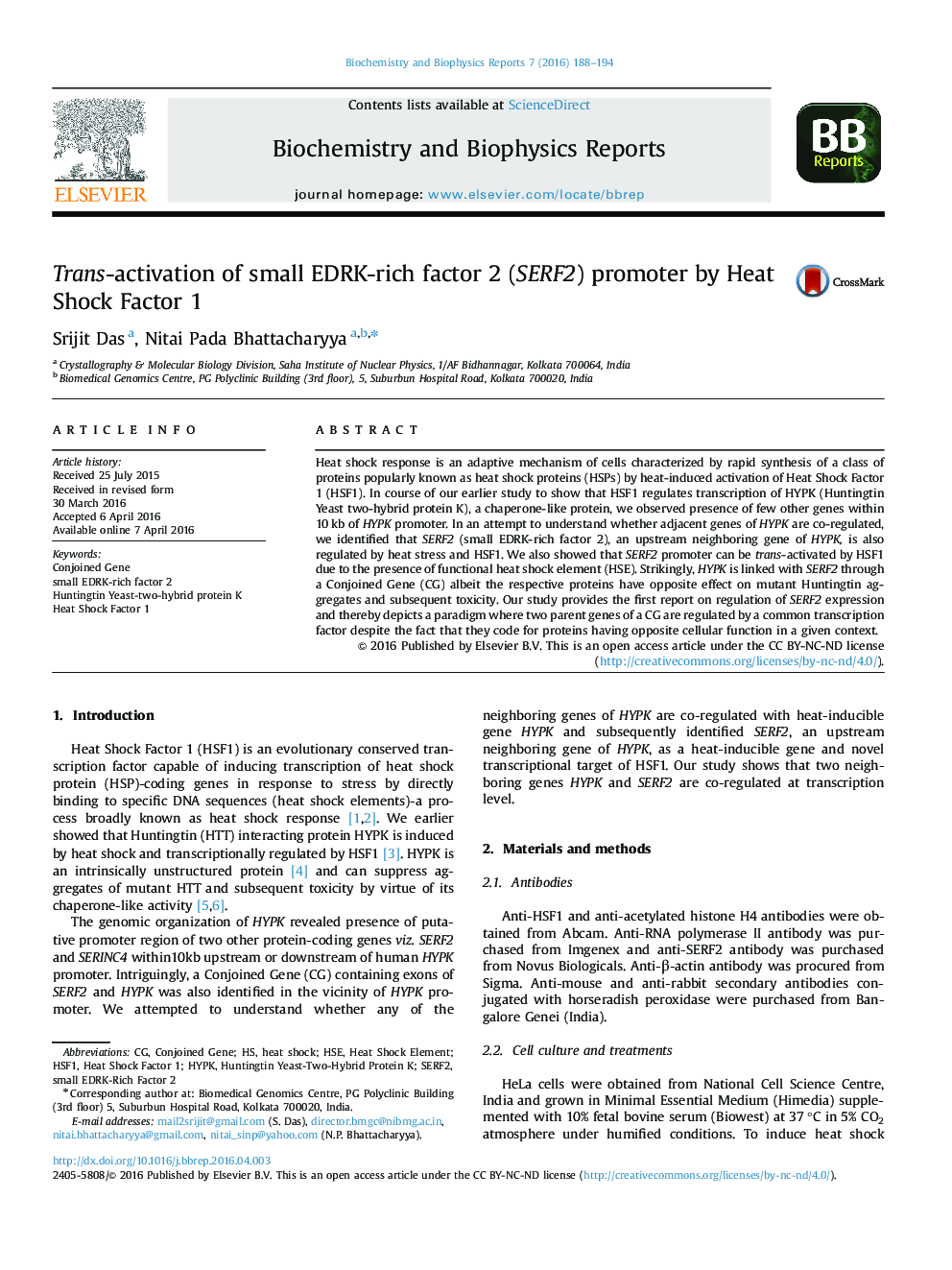| کد مقاله | کد نشریه | سال انتشار | مقاله انگلیسی | نسخه تمام متن |
|---|---|---|---|---|
| 1941619 | 1536901 | 2016 | 7 صفحه PDF | دانلود رایگان |

• SERF2 expression is induced by thermal stress.
• Functional HSE is present in SERF2 promoter.
• SERF2 promoter is induced by HSF1 in heat shock-dependent manner.
• HSF1 interacts with recombinant SERF2 promoter in vivo.
• HSF1 regulates heat shock-driven induction of SERF2.
Heat shock response is an adaptive mechanism of cells characterized by rapid synthesis of a class of proteins popularly known as heat shock proteins (HSPs) by heat-induced activation of Heat Shock Factor 1 (HSF1). In course of our earlier study to show that HSF1 regulates transcription of HYPK (Huntingtin Yeast two-hybrid protein K), a chaperone-like protein, we observed presence of few other genes within 10 kb of HYPK promoter. In an attempt to understand whether adjacent genes of HYPK are co-regulated, we identified that SERF2 (small EDRK-rich factor 2), an upstream neighboring gene of HYPK, is also regulated by heat stress and HSF1. We also showed that SERF2 promoter can be trans-activated by HSF1 due to the presence of functional heat shock element (HSE). Strikingly, HYPK is linked with SERF2 through a Conjoined Gene (CG) albeit the respective proteins have opposite effect on mutant Huntingtin aggregates and subsequent toxicity. Our study provides the first report on regulation of SERF2 expression and thereby depicts a paradigm where two parent genes of a CG are regulated by a common transcription factor despite the fact that they code for proteins having opposite cellular function in a given context.
Figure optionsDownload as PowerPoint slide
Journal: Biochemistry and Biophysics Reports - Volume 7, September 2016, Pages 188–194